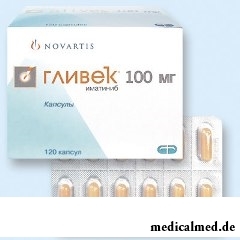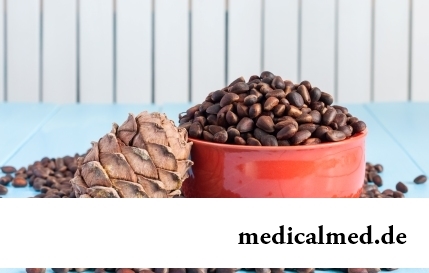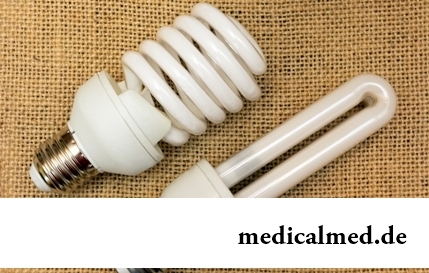





Glivek
Application instruction:
 Glivek – proteintirozinkinaza inhibitor, antineoplastic means.
Glivek – proteintirozinkinaza inhibitor, antineoplastic means.
Form of release and structure
Dosage forms:
- Capsules are opaque: the size No. 3 – with marking by red ink "NVR SH", from orange-yellow till light yellow color or the size No. 1 – with the marking "NVR SI", from orange with a gray shade till orange color; contents of capsules – powder of color, white with a yellow shade (the size No. 3: on 10 pieces in blisters, in a cardboard pack 3 blisters; size No. 1: on 12 pieces in blisters, in a cardboard pack of 2, 3, 4, 8, 10 or 15 blisters);
- Tablets, coated: from brownish-orange till dark yellow color, biconvex, with a facet: round – on one party with marking of "NVR", on another – "S" and "A" on both sides of dividing risks or oval – with marking on one party "400", on another – "SL" and "SL" on both sides risks (on 10 pieces in blisters, in a cardboard pack: on 100 mg – 2 or 6 blisters, on 400 mg – 1 or 3 blisters).
Active ingredient of Glivek – an imatinib мезилат:
- 1 capsule (size No. 3/size No. 1) – 59,75 mg / 119,5 mg that is equivalent to the maintenance of an imatinib of 50 mg / 100 to mg;
- 1 tablet (round/oval) – 119,5 mg / 478 mg that is equivalent to the maintenance of an imatinib of 100 mg / 400 to mg.
Auxiliary components:
- Capsules: titanium dioxide, cellulose microcrystallic, silicon dioxide colloid anhydrous, кросповидон, magnesium stearate, dye ferrous oxide yellow, gelatin;
- Tablets: кросповидон, cellulose microcrystallic, gipromelloza, magnesium stearate, silicon dioxide colloid, macrogoal 4000, ferrous oxide yellow, ferrous oxide red, talc.
In addition as a part of capsules: ink – lecithin soy, dye ferrous oxide red (E172), shellac.
Indications to use
Glivek's use is shown at treatment of oncological pathologies at adult patients:
- Monotherapy at the recurrent or refractory PH positive acute lymphoblastoid leukosis (ALL);
- Combination with chemotherapy at for the first time diagnosed positive on the Philadelphian chromosome (Ph+) of OLL;
- The myeloproliferative or miyelodisplastichesky diseases caused by gene reorganizations of a receptor of a growth factor of thrombocytes;
- System mastocytosis with lack of D816V-Kit from a mutation or with the unknown mutational status with-Kit;
- Chronic eosinophilic leukosis and/or hyper eosinophilic syndrome at positive or negative abnormal FIP1L1-PDGRF to an alpha tyrosinekinase;
- Gastrointestinal stromal malignant new growths positive on with-Kit (CD 117) in a metastatic or inoperable phase;
- Eminating dermatofibrosarcoma in a metastatic, recurrent and/or inoperable stage;
- Gastrointestinal stromal tumors positive on with-Kit (CD 117) at adjuvant therapy.
Besides, Glivek appoint to adults and children:
- Chronic myeloid leukosis (CML), positive on the Philadelphian chromosome (Ph+), for the first time revealed;
- PH positive myeloid leukosis in a chronic stage in the absence of effect of the previous treatment by interferon an alpha, and also in a phase of blast crisis or acceleration.
Contraindications
- Period of pregnancy and breastfeeding;
- Age up to 2 years;
- Hypersensitivity to drug components.
With care Glivek at the expressed renal failure, regular holding a procedure of a hemodialysis, a heavy liver failure, cardiovascular pathologies or risk factors of development of heart failure is recommended to apply.
Route of administration and dosage
Glivek accept inside during food, it is plentiful (not less than 1 glass) washing down with water.
If necessary contents of capsules or a tablet can be dissolved previously in water or apple juice for receiving suspension. Suspension prepare just before inclusion in proportions on 50 ml of liquid 100 mg of drug or on 100 ml – 400 mg.
The dose and the period of therapy are defined by the doctor on the basis of clinical indications.
Appointment of 400 and 600 mg is accepted 1 time a day, 800 mg – divide into 2 receptions (in the morning and in the evening) 400 mg.
The recommended dosing:
- Chronic myeloid leukosis: a chronic phase – 400 mg a day, in a phase of acceleration and blast crisis – 600 mg a day. At good tolerance and lack of a neutropenia, thrombocytopenia or other undesirable effects, increase in a dose up to 800 mg during the progressing of any stage of HML, absence after 3 months of therapy of satisfactory hematologic or 12 months is shown – the cytogenetic answer, and in case of loss of earlier reached hematologic and/or cytogenetic indicators. For children (2 years are more senior) the dose is determined proceeding from body surface area – by 340 mg on 1 sq.m, but no more than 600 mg a day. The child can once accept the calculated dose or in equal shares 2 times a day;
- PH positive acute lymphoblastoid leukosis: 600 mg a day;
- Myeloproliferative or miyelodisplastichesky diseases: 400 mg a day;
- Metastatic and/or inoperable malignant stromal new growths of the digestive tract (DT): 400 mg a day, at insufficient clinical effect and lack of side reactions a dose can be increased to 600 or 800 mg. At patients with signs of progressing of a disease Glivek's reception should be cancelled;
- Adjuvant therapy of gastrointestinal stromal tumors: 400 mg a day within 36 months and more;
- Eminating dermatofibrosarcoma (inoperable, recurrent and/or metastatic): 800 mg a day;
- System mastocytosis in the absence of D816V-Kit from a mutation: 400 mg a day. The patient with the unknown mutational status and at insufficient effect of the previous therapy – 400 mg a day;
- The system mastocytosis caused by abnormal FIP1L1-PDGFR an alpha tyrosinekinase against the background of merge of genes of Fip like1 and PDGFR: an initial dose – 100 mg a day, with possible increase to 400 mg a day;
- Hyper eosinophilic syndrome and/or chronic eosinophilic leukemia (Hydroelectric power station/HEL): the adult patient – 400 mg a day. At hydroelectric power station/HEL from abnormal FIP1L1-PDGFR an alpha tyrosinekinase – the initial dose has to make 100 mg a day, for increase in efficiency and in the absence of heavy side effects the dose can be raised to 400 mg a day.
Glivek's reception lasts until the termination of clinical effect.
The patient with an easy, moderate or severe form of functional disorder of a liver drug is appointed in a daily dose by no more than 400 mg. At development of side toxic effects the dose needs to be lowered. Extra care should be shown at purpose of drug the patient with a heavy liver failure.
At a renal failure, including severe forms, or systematic carrying out a hemodialysis the initial dose of drug makes 400 mg of 1 times a day.
Patients with bad portability of an imatinib can lower an initial dose, at small efficiency – to increase.
Correction of the mode of dosing for patients of advanced age is not required.
In case of development of serious not hematologic side effects against the background of Glivek's reception, treatment is recommended to be cancelled until elimination of symptoms of disturbance of a condition of the patient.
Drug is cancelled at increase in concentration of bilirubin by 3 times, activities of hepatic transaminases in blood serum – are 5 times higher than indicators of the inborn adrenal struma (IAS). After recovery of concentration of bilirubin (it is less 1,5×ВГН) and activities of hepatic transaminases (less 2,5×ВГН) administration of drug is resumed. Treatment is continued, having lowered an initial daily dose: from 800 mg to 600 mg, from 600 mg to 400 mg, from 400 mg to 300 mg; at children – from 340 to 260 mg on 1 sq.m.
Temporary cancellation of therapy or dose decline is required at emergence of a neutropenia and thrombocytopenia.
For the system mastocytosis and hydroelectric power station/HEL (caused by abnormal FIP1L1-PDGFR an alpha tyrosinekinase), chronic phase HML (adults and children), malignant stromal new growths of a GIT, miyelodisplastichesky or myeloproliferative pathologies, a system mastocytosis and hydroelectric power station/HEL after achievement of absolute number of neutrophils more 1500/mkl and thrombocytes more than 75 000/mkl resuming of treatment in an initial dose is shown. In case of repeated decrease in number of neutrophils and thrombocytes, after the next cancellation treatment should be begun in a dose: adult – 300 mg, children – 260 mg on 1 sq.m.
At absolute number of neutrophils less 500/mkl and/or numbers of thrombocytes less than 10 000/mkl at patients with a PH positive acute lymphoblastoid leukosis and HML in a phase of acceleration and blast crisis (children and adults) after one or several months of therapy it is necessary to be convinced that the cytopenia is not connected with a leukosis. If the cytopenia is not a consequence of a leukosis, Glivek's dose is reduced to 400 mg at adults and to 260 mg on 1 sq.m at children, at preservation of a cytopenia after 2 weeks of therapy the dose should be lowered to 300 mg and 200 mg on 1 sq.m respectively again. In the absence of effect after 4 weeks of administration of drug therapy is cancelled before recovery of absolute number of neutrophils to more 1000/mkl and thrombocytes by more than 20 000/mkl. Adults reception begin in a dose 300 mg, children – 260 mg on 1 sq.m.
At an eminating dermatofibrosarcoma in an inoperable, recurrent and/or metastatic stage after drug withdrawal treatment renew in a dose 600 mg, at repeated decrease in number of neutrophils and/or numbers of thrombocytes – in a dose of 400 mg after recovery of a state.
Side effects
At clinical trials of use of Glivek for patients with inoperable and/or metastatic stromal malignant new growths of a GIT and HML the following side effects are noted:
- Infectious pathologies: infrequently – the sinusitis, herpes surrounding, a nasopharyngitis, a herpes simplex, pneumonia, an inflammation of hypodermic cellulose, flu, infections of upper parts of respiratory tracts, a gastroenteritis, sepsis, infections of urinary tract; seldom – mycoses;
- The malignant, benign and not specified tumors, including polyps and cysts: seldom – cider of a lysis of a tumor;
- System of a hemopoiesis: very often – thrombocytopenia, a neutropenia, anemia; often – a febrile neutropenia, a pancytopenia; infrequently – a lymphopenia, a trombotsitemiya, oppression of a marrowy hemopoiesis, a limfoadenopatiya, an eosinophilia; seldom – hemolitic anemia;
- Metabolism: often – anorexia; infrequently – appetite disturbance, a hypopotassemia, a hypophosphatemia, a hyperuricemia, a hyponatremia, dehydration, gout, a hyperglycemia, a hypercalcemia; seldom – a hypomagnesiemia, a hyperpotassemia;
- Nervous system: very often – a headache; often – taste disturbance, sleeplessness, dizziness, a hypesthesia, paresthesias; infrequently – a hemorrhagic stroke, a peripheral neuropathy, a syncope, drowsiness, memory disturbance, migraine, a sciatica, a tremor, a syndrome of uneasy legs, a depression, decrease in a libido, alarm; seldom – increase in intracranial pressure, an optic neuritis, spasms, confusion of consciousness;
- Sense bodys: often – increase in a slezootdeleniye, the century, hemorrhage in a conjunctiva, a syndrome of a dry eye, sight misting, conjunctivitis swelled; infrequently – eye pain, irritation of eyes, orbital hypostasis, macular hypostasis, retinal hemorrhages, hemorrhage in an eye sclera, a blepharitis, a sonitus, вертиго, decrease in hearing; seldom – a papilledema, a cataract, glaucoma;
- Cardiovascular system: infrequently – inflows, a heart consciousness, tachycardia, congestive heart failure, hemorrhages, a fluid lungs; seldom – stenocardia, arrhythmias, a lowering of arterial pressure, a pericardiac exudate, fibrillations of auricles, a myocardial infarction, a sudden cardiac standstill, arterial hypertension, a cold snap of extremities, hematomas, Reynaud's syndrome, arterial hypotension;
- Respiratory system: often – short wind, nasal bleeding, cough; infrequently – throat or throat pains, a pleural exudate, pharyngitis; seldom – pulmonary fibrosis, pleural pain, pulmonary hemorrhages, pulmonary hypertensia;
- Alimentary system: very often – dyspepsia, nausea, vomiting, abdominal pains, diarrhea; often – dryness in a mouth, a meteorism, a lock, abdominal distention, a gastroesophageal reflux, gastritis, increase in activity of liver enzymes; infrequently – an eructation, stomatitis, gastrointestinal bleedings, an ulceration of a mucous membrane of a mouth, a melena, ascites, an esophagitis, stomach ulcer, a cheilitis, vomiting blood, pancreatitis, a dysphagy, a hyperbilirubinemia, hepatitis, jaundice; seldom – paralytic or obturatsionny intestinal impassability, colitis, an intestines inflammation, a liver necrosis, a liver failure;
- Dermatological reactions: very often – skin rash, dermatitis, periorbital hypostases, eczema; often – a xeroderma, an itch, puffiness of the person, an erythema, night perspiration, reactions of a photosensitization, an alopecia; infrequently – bruises, pustular rash, the increased sweating, ecchymomas, a small tortoiseshell, the increased predisposition to formation of hematomas, a hyperpegmentation or a hypoxanthopathy, exfoliative dermatitis, a hypotrichosis, injury of nails, petechias, a folliculitis, psoriasis, violent rash, a purpura; seldom – an acute febrile neutrophylic dermatosis (a syndrome It is twisted), discoloration of nails, a Quincke's disease, a leykoklastichesky vasculitis, Stephens-Johnson's syndrome, a mnogoformny erythema, an acute generalized pustular dieback;
- Musculoskeletal system: very often – mialgiya, arthralgias, muscular spasms and spasms, ostealgias and other musculoskeletal pains; often – swelling of joints; infrequently – constraint of joints and muscles; seldom – arthritises, muscular weakness; frequency is unknown – delay of growth at children;
- Urinary system: infrequently – a frequent urination, a hamaturia, kidney pain, an acute renal failure;
- Reproductive system: infrequently – erectile dysfunction, a gynecomastia, a menorrhagia, sexual dysfunction, disturbance of a menstrual cycle, nipple pain, a hydroscheocele, increase in mammary glands;
- General reactions: very often – hypostases, a liquid delay, increase in body weight, increased fatigue; often – fervescence, weakness, an anasarca, a shiver, a fever, weight reduction of a body; infrequently – a febricula, a stethalgia;
- Laboratory indicators: infrequently – increase in activity of an alkaline phosphatase, kreatinfosfokinaza, lactate dehydrogenase and level of creatinine in blood serum; seldom – increase in activity of amylase in a blood plasma.
Besides, at additional clinical trials undesirable reactions which emergence with Glivek's reception is not established were noted:
- Cardiovascular system: infrequently – fibrinferments or embolisms; seldom – a cardiac tamponade, a pericardis; very seldom – an acute anaphylaxis;
- Alimentary system: infrequently – paralytic or obturatsionny intestinal impassability, a necrosis of a tumor of a GIT, bleeding from a GIT tumor, perforation of a GIT; seldom – a diverticulitis;
- Respiratory system: infrequently – intersticial pneumonia, acute respiratory insufficiency;
- Organ of sight: seldom – vitreous hemorrhages;
- Nervous system: infrequently – wet brain;
- Musculoskeletal system: seldom – an avaskulyarny necrosis, a femur head necrosis, a myopathy or рабдомиолиз;
- Reproductive system: very seldom – bleeding from a cyst of a yellow body or an ovary (at women);
- Allergic reactions: very seldom – an acute anaphylaxis;
- Dermatological reactions: infrequently – a palmar and bottom eritrodizesteziya; seldom – red flat deprive, a lichenoid keratosis, a toxic epidermal necrolysis.
Special instructions
Not to allow hit of powder of Glivek on skin, in airways, eyes.
Treatment is carried out only under control of the oncologist.
Administration of drug is recommended to be accompanied with regular clinical trials of peripheral blood, functioning of kidneys and a liver, careful observation of patients with heart pathologies.
Because of risk of the expressed delay of liquid it is necessary to control the body weight of patients, especially at patients of advanced age with cardiovascular diseases. If necessary it is recommended to cancel administration of drug temporarily.
As against the background of use of an imatinib development of a hypothyroidism in patients after a thyroidectomy and being on replacement therapy by left thyroxine is possible, at this category of patients it is necessary to control concentration of thyritropic hormone.
At patients with a miyelodisplastichesky syndrome or a myeloproliferative disease and high content of eosinophils conduct a research of serumal concentration of a cardiospecific troponin and electrocardiography. In case of aberrations to the patient along with imatiniby within the first 1-2 weeks of therapy appoint system glucocorticoids.
Careful control of a condition of a GIT at a metastatic malignant gastrointestinal stromal tumor at the beginning of drug use is required.
During treatment and not less than 3 months after its termination patients are recommended to use well-tried remedies of contraception.
To reduce risk of development of a syndrome of a lysis of a tumor, prior to Glivek's use it is necessary to correct the increased level of uric acid and clinically expressed dehydration at patients.
When using drug in pediatrics regular control of growth of the child is required.
As drug can cause the side effects which are negatively influencing ability to concentration of attention and speed of psychomotor reactions, the patient it is necessary to observe extra care at control of vehicles and mechanisms.
Medicinal interaction
During treatment by Glivek only the oncologist individually can define a possibility of a concomitant use of other means.
Terms and storage conditions
To store at a temperature up to 30 °C. To protect from children.
Period of validity – 3 years.
People who got used to have breakfast regularly have obesity much less often.

Such trouble as the milkwoman's attack, at least once in life happened almost to each woman. Prevalence забол...
Section: Articles about health
Any person who faced a disease knows that treatment costs expensive. It belongs also to consultations of qualified specialists, and to the diagnostic procedures which are not included in the list of obligatory medical services. Question of cost of medicinal Wednesday...
Section: Articles about health
A lot of things depend on a condition of a backbone in a human body, a backbone - not only a support for a body, it also a receptacle for a spinal cord, that is why malfunctions with a backbone are so dangerous. To treat rachis diseases very difficult and long, it is much simpler and more correct not to bring to a disease. Conforming to the rules provided in this article it is possible to avoid the majority of the problems connected with a backbone including those which are considered to be age, but a cat...
Section: Articles about health
Life activity of one-celled fungi of the sort Candida is a proximate cause of development of candidiasis (milkwoman), it is related...
Section: Articles about health
According to data of World Health Organization, the cataract is diagnosed almost for 7% of the population of Earth. The statistics of incidence is considered not full as at an initial stage the illness, as a rule, does not cause to the person of special inconveniences, and many having got sick...
Section: Articles about health
Hemorrhoids – extremely widespread disease. Periodically arising inflammations and bleeding of hemorrhoidal nodes cause serious discomfort to nearly fifteen percent of adults. Meanwhile, having a clear idea of the reasons of an exacerbation of an illness and following rules of precaution, it is possible to reduce substantially sharpness of unpleasant feelings and to reduce progressing of a disease....
Section: Articles about health
Sugar - the digestible refined product which is not of special value for an organism of the modern person. Use...
Section: Articles about health
For the city dweller the fitness is the most convenient sport. It is enough to acquire the subscription to the gym to get access to various apparatuses and an opportunity to train under the leadership of the experienced consultant. Many consider fitness on...
Section: Articles about health
The hysteromyoma is diagnosed more than at a third of women 35 years are more senior. This high-quality new growth which at early stages successfully resolves by means of medicines. It is necessary to resort to an operative measure only when patients too late address specialists, or therapeutic methods do not give the expected effect because of specific features of an organism. Besides, there is a large number of quite effective national...
Section: Articles about health
Almost each of us during life faced dissatisfaction with own body. At such moments, as a rule, we beginning...
Section: Articles about health
(Xerostomia) many people consider feeling of a xerostomia small and easily removable inconvenience. This delusion: the symptom can demonstrate existence of serious diseases. It is worth to remember also that saliva performs important functions...
Section: Articles about health
Energy saving lamps are one of the most popular products of innovative technologies, and there is no wonder: they much more economic also are more long-lasting than usual filament lamps. At the same time there are fears that energy saving bulbs can become the reason of emergence of problems with health. Unfortunately, some of similar opinions have the real reasons....
Section: Articles about health
Frosty air, fresh wind and easy snowball at most of Russians are associated with cheerfulness, health and cheerful entertainments, on to...
Section: Articles about health
Tick-borne encephalitis – one of the most dangerous viral diseases which causative agents transfer and is given to people by ixodic mites. These are the small blood-sicking insects living in the considerable territory of our country. The person bitten by a tick can catch...
Section: Articles about health
The healthy nutrition is the invariable principle of health and good health for long years of the woman. Nevertheless, in a diet at each stage of life there are the features allowing to support an organism by those substances which are most necessary for it at present. Eating according to them, the woman will be able to feel vigorous and strong, and also to adapt to changes in an organism so that they allowed it to lead active lifestyle at any age....
Section: Articles about health
Use of medicinal plants in therapy is urgent today, more than ever. The drugs made of curative herbs cannot on...
Section: Articles about health
Dietary supplements (dietary supplements) for the last decades were so thoroughly included into our life that, apparently, it is already impossible to find the person who at least once did not try them. At the same time, most of our compatriots have a vague idea about...
Section: Articles about health
What is in our understanding weeds? It plants which are considered to be suitable only for compost pits and feeding of animals. Meanwhile, among the weeds growing literally under legs it is possible to find the mass of the officinal herbs having invaluable advantage for human health. It is possible not only to be treated by most of them, using as broths, tinctures, compresses, but also to accept in food as usual products. Let's consider 8 widespread and often ignored by people...
Section: Articles about health
Doctors claim that the people not so familiar with a dorsodynia occur among adult Russians very seldom. At the same time подавляющ...
Section: Articles about health
Aging — natural and inevitable process. Over time our skin loses elasticity, on it saggings are formed, the face form loses former clearness. The procedure of nitevy lifting (nitevy tightening) can successfully solve this problem. In order that it is better познако...
Section: Articles about health
All know that self-treatment is dangerous. However absolutely it is almost impossible to do without it. Rate of modern life does not allow to handle each small trouble to the doctor and information on ways of independent delivery of health care is quite available. Means, all of us have only one: to learn to give this help competently and in those limits in which it is possible for the person who does not have vocational education....
Section: Articles about health
Tea is loved and use almost everything. This drink has tonic properties, contains the tannins capable podavlit...
Section: Articles about health
Bees – really unique beings. Practically all products of their life activity are used by the person. Since the most ancient times medicinal properties of honey and other substances received in the course of beekeeping are known. The fact that all these пр is especially significant...
Section: Articles about health
Helminthosis is one of the most widespread diseases. Statistically, any species of helminths infected every third inhabitant of the planet. Most of specialists even consider these data strongly underestimated: some uninvited "cohabitants" do not cause the carriers serious troubles, and patients just do not see doctors. The situation is aggravated also with the fact that people know about specifics of similar illnesses very little. At many presence of worms is strong ассоциир...
Section: Articles about health
The pine is one of the most widespread plants of our woods. Its needles and pitch not without reason called by "gallipot", since ancient times испол...
Section: Articles about health
The modern person not always manages to find housing in the environmentally friendly region and such work which would not do harm to health. With food stuffs at first sight the situation is much better: shops are overflowed with goods which are positioned пр...
Section: Articles about health

